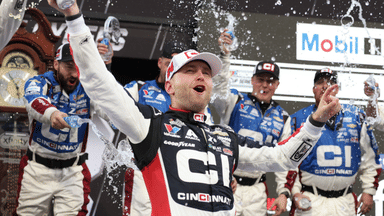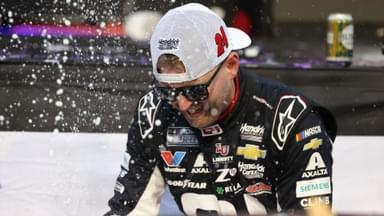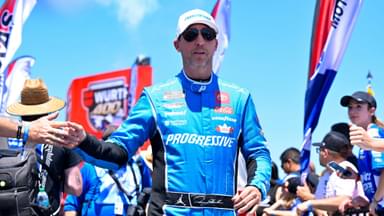For decades, NASCAR has been a battlefield of innovation, a place where teams once bent metal and rules in equal measure to gain a Sunday edge. But in the Next Gen era, that creative freedom had hit a wall.
Advertisement
With nearly every major component single-source supplied, even the smallest tweaks in the current day and age can draw hefty fines. Now, however, the winds of change might be shifting again. NASCAR officials, led by Steve O’Donnell, are hinting at loosening the reins, a move that could breathe fresh life into garage ingenuity.
Among those welcoming the idea is Hendrick Motorsports crew chief Rudy Fugle, who seemed in favor of more freedom to innovate. “100 percent in favor of opening some things up. There are plenty [of] areas of the car that you could say, ‘whatever you want to do, but don’t do this’ and ‘don’t change that’ to make things way more open.”
He explained that current setups revolve around strict ‘shock limiter’ rules, devices that control suspension travel and keep cars glued to the track. “That’s how we keep the cars off the track, and that’s created the entire setup. We have some burnout, going through the year, and we are so limited on what we can change, and with just a little, but more opening of the rule book, that could get us excited, and it would be fun,” he added.
In its early years, stock cars were exactly that, showroom machines with little more than safety bars bolted in. Mechanics with bootlegger nerve and moonshine know-how would soup up engines and reinforce chassis, determined to win on Sunday, sell on Monday.
Through the 1960s and 1970s, rules were loose enough for innovation to thrive, when teams produced aero warriors like the Dodge Charger Daytona and Plymouth Superbird.
But by the 1990s and early 2000s, NASCAR had tightened its grip. The Next Gen car today pushes that to its limit: uniform parts, centrally sourced suppliers, and minimal tolerance for modification. The upside was cost control and safety; the downside was a sense that the soul of garage creativity had been boxed in.
Now O’Donnell suggests that may be changing. NASCAR, he said, is evaluating areas of the Next Gen car to allow teams to do some more things that aren’t single-source supplied. He acknowledged the sport’s need to recapture its competitive spirit, the ability to tweak the car and find an advantage.
The long-term goal is to find a balance and to let race teams manufacture select parts again while preserving fairness. If these plans take shape, NASCAR could be heading toward a renaissance, one where teams rediscover the art of outsmarting rather than just outspending, and where innovation once again becomes part of the chase for wins.







